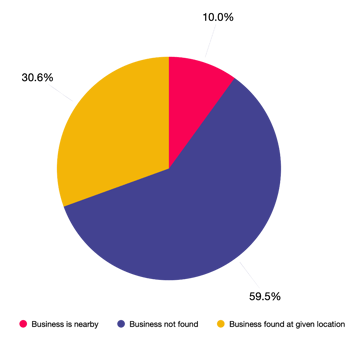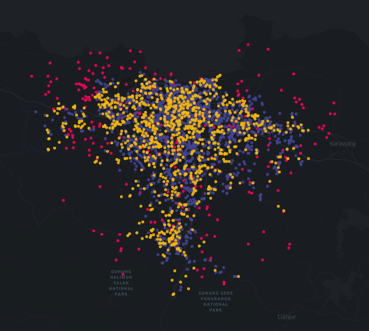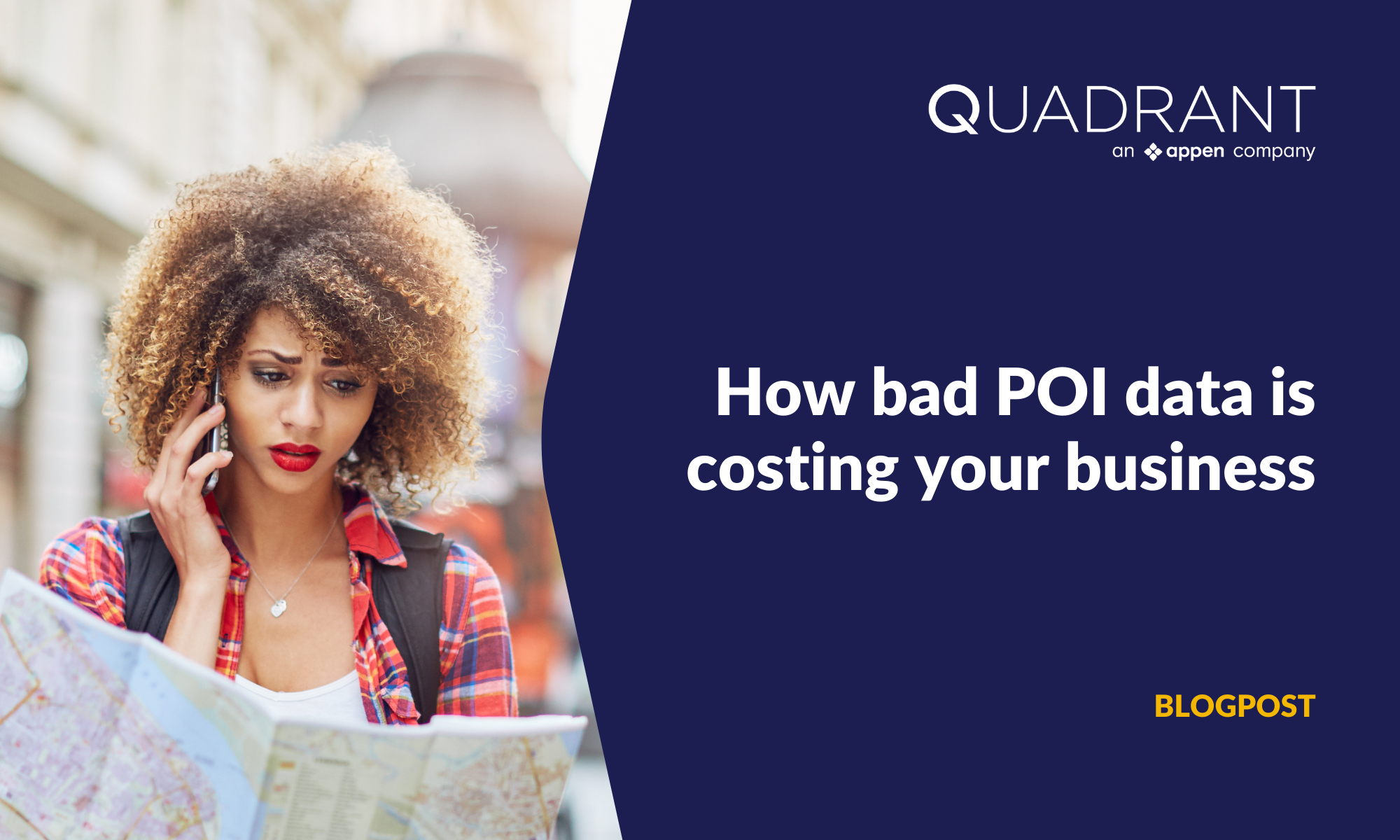Point-of-Interest (POI) data is the foundation for digital maps that enable on-demand service delivery models in navigation, logistics, and other industries. POI data is instrumental for businesses to dynamically match consumers with the right services and places with relevant context. The application and analysis of POI data should be a top priority for all location-based businesses to improve operational efficiency, save costs, and stay ahead of competition.

Your POI database needs attention!
The pandemic and consequent changes in society transformed the physical world drastically. Businesses closed or moved online, public spaces and services adapted to accommodate travel restrictions, social distancing mandates, etc. With these changes, the data representing spaces in the digital economy also became outdated.
As organisations worldwide recuperate from the pandemic, POI data is playing a vital role in reestablishing broken supply chains, supporting hybrid business models, predicting demand, and helping consumers re-navigate their surroundings.
Pandemic aside, POI data constantly changes as establishments relocate, expand, rebrand, and renovate. When a database is outdated, it becomes less relevant for the services it is supporting, threatening the bottom line. Therefore, POI databases need to be refreshed frequently and outdated information should be promptly detected and updated.
What’s wrong with my existing POI database?
Most off-the-shelf POI databases are scraped from online maps. However, there is often a notable difference between the geo-coordinates in the database and the actual position of the location. For example, data from Geolancer – Quadrant’s proprietary POI collection and verification platform – shows that there is, on average, a displacement of 53 meters between listed addresses and the actual geo-coordinates of locations.
While working with one of the largest mapping companies in the world, we also discovered that almost 60% of pre-2020 POI records are outdated and do not match the reality on the ground. It is not feasible to make your most critical decisions, such as reopening your sales outlets, taking your business online, or managing your delivery operations based on this outdated data.
Moreover, virtually all common sources of POI data lack contextual attributes or custom metadata relevant to specific industry and business use cases. Most companies need tailored information about POIs, be it the properties of the pick-up and drop-off points at a location (if it is on the side of the road or at the entrance; if it is well-lit or sheltered, etc.) or metadata about restaurants (for example dietary preferences or if they offer take-outs). Translated to business value, the lack of this information and the obsolete data mean degradation of services, increased delivery times, and unsatisfied consumers. POI data is the heart of businesses in transportation, delivery, logistics, and similar services, and compromising the quality and recency of this data can wreak havoc on your bottom line.
Let’s look at a few use cases where wrong and outdated POI data could impact business costs.
Search engines
To retain users in a highly competitive space, search engines need to provide users with reliable, relevant, and useful information on their surroundings while being as detailed and granular as possible - every single time. However, most off-the-shelf POI databases are outdated and do not match the physical world.
For search engines, incorrect results can mean lower CTR and CPM rates, declining user trust, and wasted ad and marketing dollars. For instance, one of the most popular search engines caters to 12 billion searches per month, 5 billion of which are location-specific searches. We correlated the search engine's performance with results from a sample of POI data verified by Geolancer. Given that 40% of POIs in the existing database were inaccurate, we concluded that almost 2 billion location-based searches could potentially be returning incorrect results.
Mapping and navigation
The accuracy of POI data is critical to digital maps and navigation apps as it determines the speed, efficiency, and ultimately the value of the service. Verified Points-of-Interest (POI) data are valuable for both end-users and service providers dealing in route planning, digital maps, navigation, ridesharing, delivery, etc. However, problems like location pins pointing to the wrong place, outdated addresses, and suboptimal routes are too common. These issues increase operational costs and cause user frustration, prompting them to churn and move on to your competitors.
Quadrant is currently working with a global mapping company verifying POI datasets in Southeast Asia, correcting hundreds of POI records per day. In a sample of data verified by Geolancers in Indonesia in Q4 2021, we made the following observations.
- 59.5% of the locations did not match with the given addresses
- 30.6% of the locations were present at the exact lat/long provided
- 10% of the locations were found near the provided lat/long but not exactly at that point


Ridehailing
An outdated POI database can result in significant revenue loss for on-demand transportation companies due to longer waiting times, frustrated users, and cancelled rides. Ride hailing companies must ensure that their underlying location data is always up to date to deliver a seamless ride experience and retain not only riders but also their driver-partners.
A ride-hailing company in Jakarta was noticing a surge in ride cancellations in the central business district. They were registering around 30,000 cancellations per month and estimated a loss of $100,000 in a single quarter, without even including losses associated with driver hours, fuel wastage, etc.
A lot of businesses have not even begun to address issues with their underlying POI data and are losing significant money due to hidden inefficiencies. Point-of-Interest data and its application in technology platforms and analysis are crucial in building better products, retaining consumers, optimising operational efficiency, and achieving better business intelligence.
Quadrant is on a mission to refresh outdated POI databases and remap the world!
To solve the problems with outdated POI data, Quadrant introduced Geolancer, a proprietary platform for collecting and verifying POI data on the ground. Geolancer has been helping businesses refresh their mapping platforms with accurate POI data since last year. With Geolancer, we are not only helping established businesses add new, validated POIs, and revive their stale databases, but also helping smaller, local businesses to be seen.
The platform is designed to mitigate the three main problems with existing POI data: inaccuracy, outdated information, and incomplete records. The Geolancer smartphone app is used by freelancers who add POIs manually, on the ground, while walking around in their neighbourhood. Properties include latitude, longitude, address, category, and opening hours, among other custom metadata attributes most off-the-shelf databases don't even collect. These POIs are then frequently verified by other Geolancers to keep them up-to-date. Users are rewarded with cryptocurrency for the data they provide or verify
Geolancer's POI data has proven valuable in powering tech platforms and business operations in several service industries. Geolancer's data can be scaled at any level and combined with other types of geolocation and demographic data to help a range of industries with actionable insights.
Geolancer is currently live in several countries in Southeast Asia, and we are rolling it out globally in 2022.




